Difference between revisions of "Beautyflex"
Hanskerensky (talk | contribs) m (/photos/kavandje/3387062062 changed url from cp to cw) |
Hanskerensky (talk | contribs) (Added some lines of text about the differences in focusing system) |
||
| Line 2: | Line 2: | ||
The '''Beautyflex''' are a series of Japanese 6×6 TLR cameras made by [[Taiyōdō|Taiyōdō Kōki]], later Beauty Camera. | The '''Beautyflex''' are a series of Japanese 6×6 TLR cameras made by [[Taiyōdō|Taiyōdō Kōki]], later Beauty Camera. | ||
| + | |||
| + | There were quite a number of different models produced. There is a big difference in the focusing system between early Beautyflexes and the later ones. Early ones have front lens cell focusing with gear coupled taking and viewing lenses. The later ones have the traditional lens board movement focusing. | ||
== Bibliography == | == Bibliography == | ||
Revision as of 06:32, 2 April 2016
The Beautyflex are a series of Japanese 6×6 TLR cameras made by Taiyōdō Kōki, later Beauty Camera.
There were quite a number of different models produced. There is a big difference in the focusing system between early Beautyflexes and the later ones. Early ones have front lens cell focusing with gear coupled taking and viewing lenses. The later ones have the traditional lens board movement focusing.
Bibliography
- Watakushi no ni-gan-refu kamera-ten (私の二眼レフカメラ展, Exhibition of twin lens reflex cameras). Tokyo: JCII Camera Museum, 1992. (Exhibition catalogue, no ISBN number.) P. 26.
Links
In Dutch:
In Japanese:
- Beautyflex V and Beautyflex T at Otowa no nigan-refu
- Beautyflex in a TLR page in Diwa's photo site
- Beautyflex V and T at Infobazar
- Beautyflex V at Awane-Photo's camera museum
- Beautyflex in a post [1] of the Junk Binbō blog
- Beautycord at Shashin wo tanoshimu
In Chinese:
In English;
- Beautyflex on Westfordcomp.com [2]
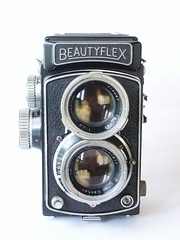 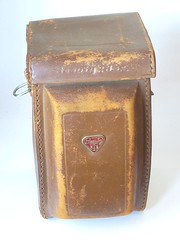 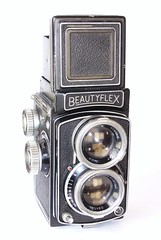
|
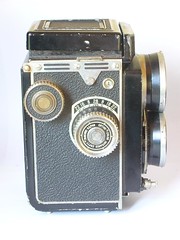 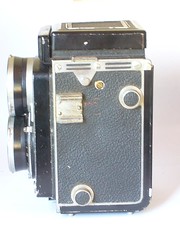 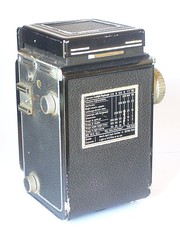
|
| Taiyo-Dou Koki Beautyflex , Canter f2.8/80mm taking lens. Images by yalluflex. (Image rights) |

|
| Comparison with a better-known Japanese TLR image by kavandje (Image rights) |
|
|


